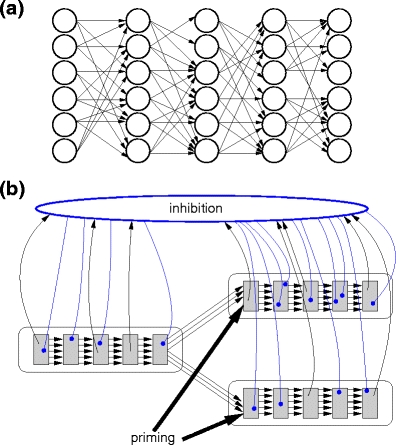Fig. 1.

Synfire chains, global inhibition and priming. (a) Sketch of a synfire chain. Excitatory neurons (open circles) are organized in pools. Each neuron in pool j makes connections (black arrows) to the neurons in pool j + 1 in a feed-forward manner employing a random divergent connection schema with a dilution rate of p = 0.5. (b) Synfire chain switching in the presence of global inhibition and priming. The final pool of one chain establishes excitatory feed-forward connections to the initial pools of two potential successor chains. When the synfire activity reaches the end of the first chain, both potential successor chains are stimulated. The synfire chains are reciprocally connected with a population of inhibitory neurons. The simultaneous activity in the potential successor chains thus leads to an increase of inhibition in the network. Due to the dominant and fast global inhibition, activity can only propagate in one of the potential successor chains. Priming is induced by additional excitation to one or both of the successor chains, altering the switching probability. Excitatory connections are represented by black arrows, inhibitory connections by blue arrows
